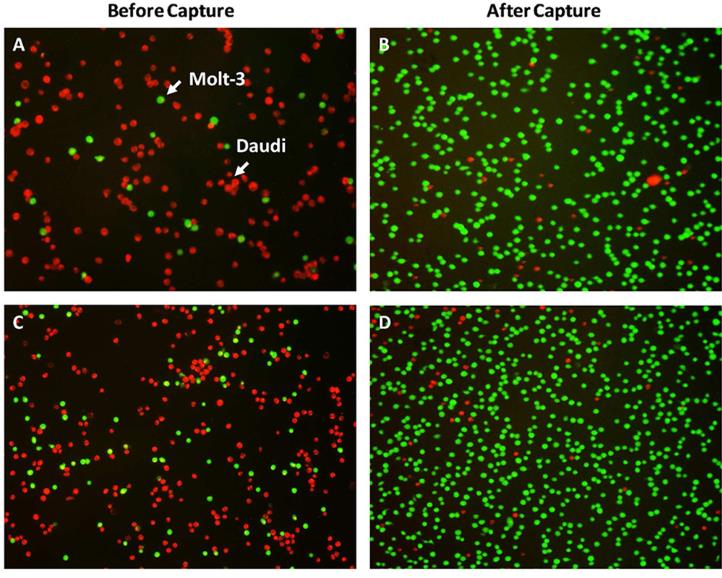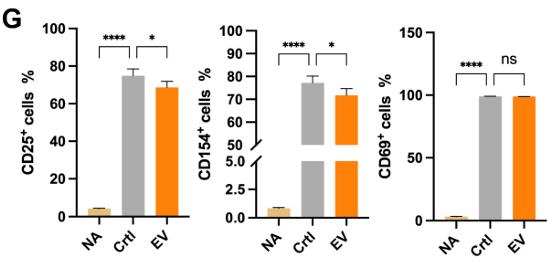CD4
-
Official Full Name
CD4 molecule -
Overview
This gene encodes a membrane glycoprotein of T lymphocytes that interacts with major histocompatibility complex class II antigenes and is also a receptor for the human immunodeficiency virus. This gene is expressed not only in T lymphocytes, but also in B cells, macrophages, and granulocytes. It is also expressed in specific regions of the brain. The protein functions to initiate or augment the early phase of T-cell activation, and may function as an important mediator of indirect neuronal damage in infectious and immune-mediated diseases of the central nervous system. Multiple alternatively spliced transcript variants encoding different isoforms have been identified in this gene. [provided by RefSeq, Aug 2010] -
Synonyms
CD4;CD4 molecule;CD4mut;T-cell surface glycoprotein CD4;CD4 receptor;CD4 antigen (p55);T-cell surface antigen T4/Leu-3
Recombinant Proteins
- Human
- Cynomolgus
- Mouse
- Ferret
- Rat
- Rhesus macaque
- Feline
- Monkey
- Rabbit
- Chicken
- Zebrafish
- Macaca Fascicularis
- Sheep
- Bovine
- Oryctolagus cuniculus
- Pan troglodytes
- Dog
- Macaca fascicularis
- Macaca mulatta
- Mus musculus
- Macaca fuscata fuscata (Japanese macaque)
- HEK293
- E.coli
- Human Cells
- Mammalian Cells
- Wheat Germ
- Sf9 Cells
- Insect Cells
- Rabbit
- In Vitro Cell Free System
- Yeast
- Pneumonas aeruginosa exotoxin A
- Fc
- His
- Non
- GST
- Flag
- Avi
- S
- DDK
- Myc
- Strep II
Background
What is CD4 protein?
CD4 gene (CD4 molecule) is a protein coding gene which situated on the long arm of chromosome 12 at locus 12p13. This gene encodes the CD4 membrane glycoprotein of T lymphocytes. The CD4 antigen acts as a coreceptor with the T-cell receptor on the T lymphocyte to recognize antigens displayed by an antigen presenting cell in the context of class II MHC molecules. This gene is expressed not only in T lymphocytes, but also in B cells, macrophages, granulocytes, as well as in various regions of the brain. The protein functions to initiate or augment the early phase of T-cell activation, and may function as an important mediator of indirect neuronal damage in infectious and immune-mediated diseases of the central nervous system. The CD4 protein is consisted of 458 amino acids and CD4 molecular weight is approximately 51.1 kDa.
What is the function of CD4 protein?
CD4 protein is a key immunomodulatory molecule, mainly expressed on the surface of helper T cells. It acts as a co-receptor of T cell receptors and binds to MHC Class II molecules to help T cells recognize antigens presented by antigen-presenting cells, activate T cells and trigger immune responses. CD4 proteins play a critical role in T cell activation, proliferation, and differentiation, influencing cytokine production, cell adhesion and migration, and differentiation of T cell subsets such as Th1, Th2, Th17, and Treg, which perform different but important functions in regulating immune response and maintaining immune balance. In addition, CD4 protein is also involved in the infection mechanism of HIV virus, HIV uses CD4 protein as the main receptor to enter the host cell.

Fig1. Influence of distinct cytokine milieu in the differentiation of CD4+T cells. (Rishi Vishal Luckheeram, 2012)
CD4 related signaling pathway
As co-receptors on the surface of T cells, CD4 works with T cell receptors (TCRS) to recognize antigens presented by antigen-presenting cells (APCs) via MHC Class II molecules, a process that activates T cells and triggers downstream signaling molecules including tyrosine kinase Lck. These signaling events activate a variety of intracellular signaling pathways, such as Ras-MAPK, PI3K-Akt, and calmodulin pathways, leading to altered gene expression, cytokine production, cell proliferation and differentiation, and T cell migration and adhesion. CD4 protein is also closely related to HIV infection, as the main receptor for the HIV virus to enter the host cell, CD4 binds to the gp120 protein on the surface of the virus, promoting the internalization and infection of the virus. In addition, the activation and differentiation of CD4-positive T cells are also influenced by the environment of cytokines, such as IL-12, IL-4, IL-6, and TGF-β, which guide T cells to differentiate into different effecting and regulatory subsets, such as Th1, Th2, Th17, and Treg, through specific signaling pathways. These subgroups play a key role in adaptive immune responses.
CD4 related diseases
CD4-related diseases refer to a group of conditions that affect the immune system, specifically the CD4+ T cells. These cells play a crucial role in regulating the immune response and protecting the body from infections. CD4-related diseases include HIV/AIDS, which is caused by the human immunodeficiency virus (HIV) that attacks and destroys CD4+ T cells, leading to a weakened immune system. Other CD4-related diseases may include autoimmune disorders, such as lupus and rheumatoid arthritis, which are characterized by an overactive immune response that attacks healthy tissues. Treatment for CD4-related diseases often involves managing symptoms and preventing further damage to the immune system.
Bioapplications of CD4
By altering the structure of the HIV-1 envelope protein so that it can bind rhCD4 more efficiently, the ability of SHIV (simian human immunodeficiency virus) to replicate in Rhesus monkey lymphocytes can be improved, which has important implications for studying the transmission of HIV-1 and the testing of vaccines. In addition, rhCD4 protein is also used in the development of immunotherapy, especially in tumor immunotherapy, by activating CD4+ T cells to enhance the body's anti-tumor immune response. CD4+ T cells can not only assist CD8+ T cells to play cytotoxic roles, but also have the ability to directly kill tumor cells, which provides a new strategy and target for cancer treatment.
Case Study
Case Study 1: Qing Zhou, 2012
Aptamers are gaining popularity as stable and customizable alternatives to antibodies. This study presents the creation of an aptamer-based surface for capturing cells that express the CD4 antigen. The surfaces, made of glass or silicon, were first treated with amine-terminated silanes and then coated with a CD4-targeting RNA aptamer. Ellipsometry confirmed the successful modification and specific binding of recombinant CD4 protein. The surfaces were then tested with CD4-positive and -negative lymphocyte cell lines. Results indicated that the aptamer-coated surfaces captured CD4-expressing cells with efficiency comparable to anti-CD4 antibody-coated surfaces. To simulate the isolation of specific T-cells from a mixed cell population, the aptamer-modified surfaces were incubated with a mixture of Molt-3 (CD4+) and Daudi B (CD4-) cells, achieving a 94% purity of CD4+ cells from an initial 15% CD4+ fraction.

Fig1. The changes in thickness after aptamer-modified surfaces were challenged with CD4 protein (target analyte) and CD8 protein.

Fig2. Capture of CD4 expressing cells from binary cell mixtures.
Case Study 2: Fan Yang, 2024
Imbalanced T-cell responses contribute to various liver diseases, but the mechanisms controlling liver immunity and treatments to prevent excessive T-cell activation are not well understood. Researchers analyzed metabolic changes in ConA-induced mice and autoimmune hepatitis (AIH) patients and their link to liver damage. They also examined the expression of purine-metabolizing enzymes CD39 and CD73 on liver and immune cells. This study found that altered purine metabolism in these models was associated with liver injury and treatment outcomes. CD39 and CD73 were upregulated on CD11b+Gr-1+ macrophages during liver injury. A subset of CD39+CD73+ macrophages expanded early in liver damage and reduced CD4+ T-cell overactivation and liver injury. These macrophages released extracellular vesicles rich in CD73, which converted AMP to adenosine and inosine, suppressing activated CD4+ T cells by activating the cAMP pathway and inhibiting glycolysis and cytokine release.

Fig3. The percentages of CD25-, CD69- and CD154-positive activated hepatic CD4+ T cells among the three groups.

Fig4. Percentages of CD25+, CD69+, and CD154+ activated CD4+ T cells.
Quality Guarantee
High Purity
.jpg)
Fig1. SDS-PAGE (CD4-39H)
.
.jpg)
Fig2. SDS-PAGE (CD4-0807H)
Involved Pathway
CD4 involved in several pathways and played different roles in them. We selected most pathways CD4 participated on our site, such as Cell adhesion molecules (CAMs),Antigen processing and presentation,Hematopoietic cell lineage, which may be useful for your reference. Also, other proteins which involved in the same pathway with CD4 were listed below. Creative BioMart supplied nearly all the proteins listed, you can search them on our site.
| Pathway Name | Pathway Related Protein |
|---|---|
| Cell adhesion molecules (CAMs) | BLA,ITGA4,NADL1.2,CNTN2,MHC2DAB,PTPRFB,ITGA9,CLDNJ,NLGN2B,CLDN19 |
| T cell receptor signaling pathway | IKBKB,MAPK13,PPP3CA,BCL10,MAPK3,NRAS,PDPK1,PIK3CG,CD28,PIK3R1 |
| Primary i | LCK,CD8B,AIRE,ORAI1,Cd79a,ICOS,RAG2,IGLL1,RFXAP,IL2RG |
| Antigen processing and presentation | HLA-A,Ctsl,HSP90AA1,HLA-DMB,TAP1,KIR2DL3,IFI30,CANX,IFNG,KIR3DL2 |
| nodeficiency | TNFRSF13B,CD8B,DCLRE1C,PTPRC,Cd79a,CD40LG,RAG1,ICOS,TAP1,BTK |
| Hematopoietic cell lineage | CD1d1,CD1E,IL4R,CSF3R,CD36,ANPEP,ITGAM,IL6R,CD3E; CD3D,ITGA2 |
Protein Function
CD4 has several biochemical functions, for example, MHC class II protein binding,coreceptor activity,enzyme binding. Some of the functions are cooperated with other proteins, some of the functions could acted by CD4 itself. We selected most functions CD4 had, and list some proteins which have the same functions with CD4. You can find most of the proteins on our site.
| Function | Related Protein |
|---|---|
| extracellular matrix structural constituent | ELNA,IMPG1,FBLN2,PRELP,COL4A5,MATN1,COL8A2,BGN,COL1A1,OPTC |
| virus receptor activity | ITGB1,CD86,HLA-DRB1,SLC20A2,ITGA5,SLC1A5,SERPINB3,CXADR,DPP4,ANPEP |
| enzyme binding | DYM,TSPAN5,MSH3,APOA1,SUDS3,CPSF1,STUB1,NOS1,SNX12,RPS3 |
| protein binding | KLHL20,ARHGEF6,COPG,XPA,RUNDC3A,HNRNPAB,CRABP1,RAD1,DHX40,NDC80 |
| zinc ion binding | ZNF598,MMP3,FBXO40.1,MMEL1,SRSF7,MLL5,KDM2B,DBF4B,FBLIM1,BMI1 |
| receptor activity | GRIK3,NOTCH4,Tnfrsf22,VAC14,OGFRL1,TREM2,JMJD6,RTN4R,CADM4,CD200 |
| MHC class II protein binding | LAG3,KRT17,CD74A,MARCH8,CD74,CD74B |
| protein homodimerization activity | RAB11FIP4,SQSTM1,HIF1AN,VWF,SH3GLB1,NUDT21,DAXX,EEA1,TREX1,UPK1A |
| protein kinase binding | DNM1,TSKS,AXIN2,ITGB1BP1,PTK2,CAMK2N2,CRY1,SOCS1,CDK5,CHRNA7 |
Interacting Protein
CD4 has direct interactions with proteins and molecules. Those interactions were detected by several methods such as yeast two hybrid, co-IP, pull-down and so on. We selected proteins and molecules interacted with CD4 here. Most of them are supplied by our site. Hope this information will be useful for your research of CD4.
LCK;CCR5;vpu;vpu;vpu;H2-Aa;trfe_chick;NR3C1;H2-Ab1;tip_shv2c;ACTB;vpu;HRD3;INPPL1
Resources
Research Area
Conventional/Classical Dendritic CellsMHC Class I
MHC Class II
gamma delta T Cells
Natural Killer T (NKT) Cells
T Cell Markers
CD Antigen (Dendritic Cell Lineage Markers)
CD Antigen (Helper T Cells)
CD Antigen (Regulatory T Cells)
CD Antigen (T Cell Antigen Recognition)
Rheumatoid arthritis Therapeutic Targets
Lymphoid Lineage Markers
T Follicular Helper (Tfh) Cells
Th1 Cells
Th17 Cells
Th2 Cells
Th22 Cells
Th9 Cells
Related Services
Related Products
References
- Chang, B; Sheng, R; et al. Prevalence of Howell-Jolly Body-Like Inclusions in HIV Patients and Their Correlation with CD4 Counts and HIV RNA Viral Load. ANNALS OF CLINICAL AND LABORATORY SCIENCE 45:23-26(2015).
- Nkala, B; Khunwane, M; et al. Kganya Motsha Adolescent Centre: a model for adolescent friendly HIV management and reproductive health for adolescents in Soweto, South Africa. AIDS CARE-PSYCHOLOGICAL AND SOCIO-MEDICAL ASPECTS OF AIDS/HIV 27:697-702(2015).



